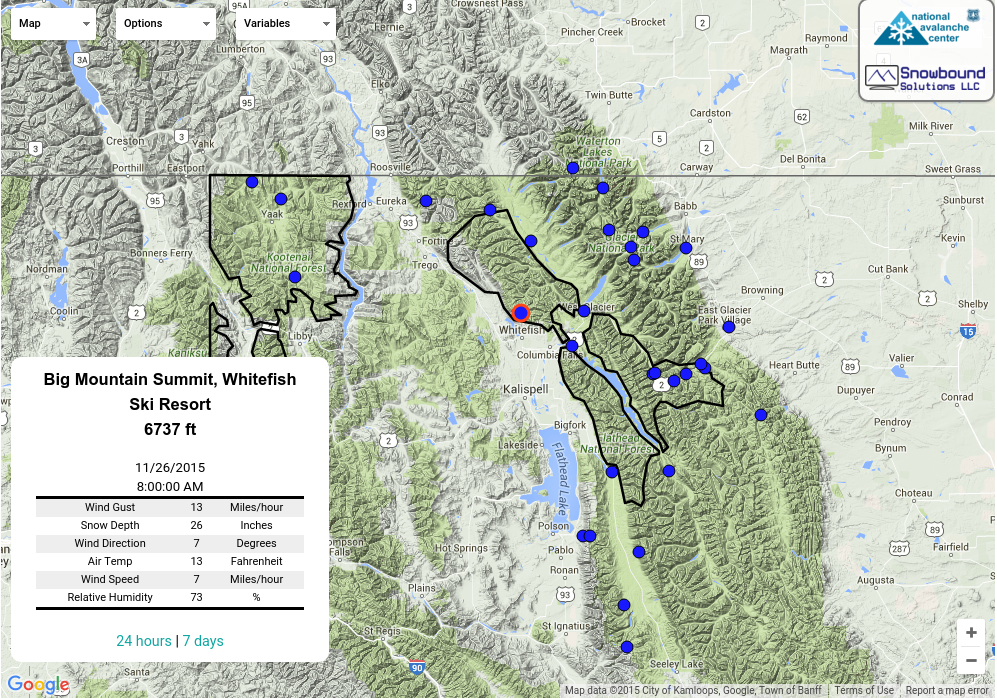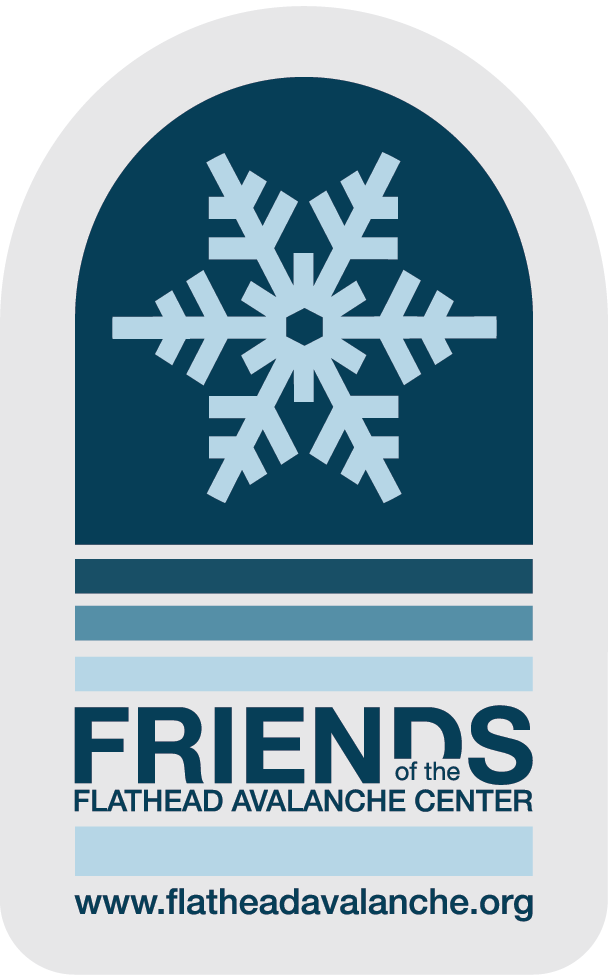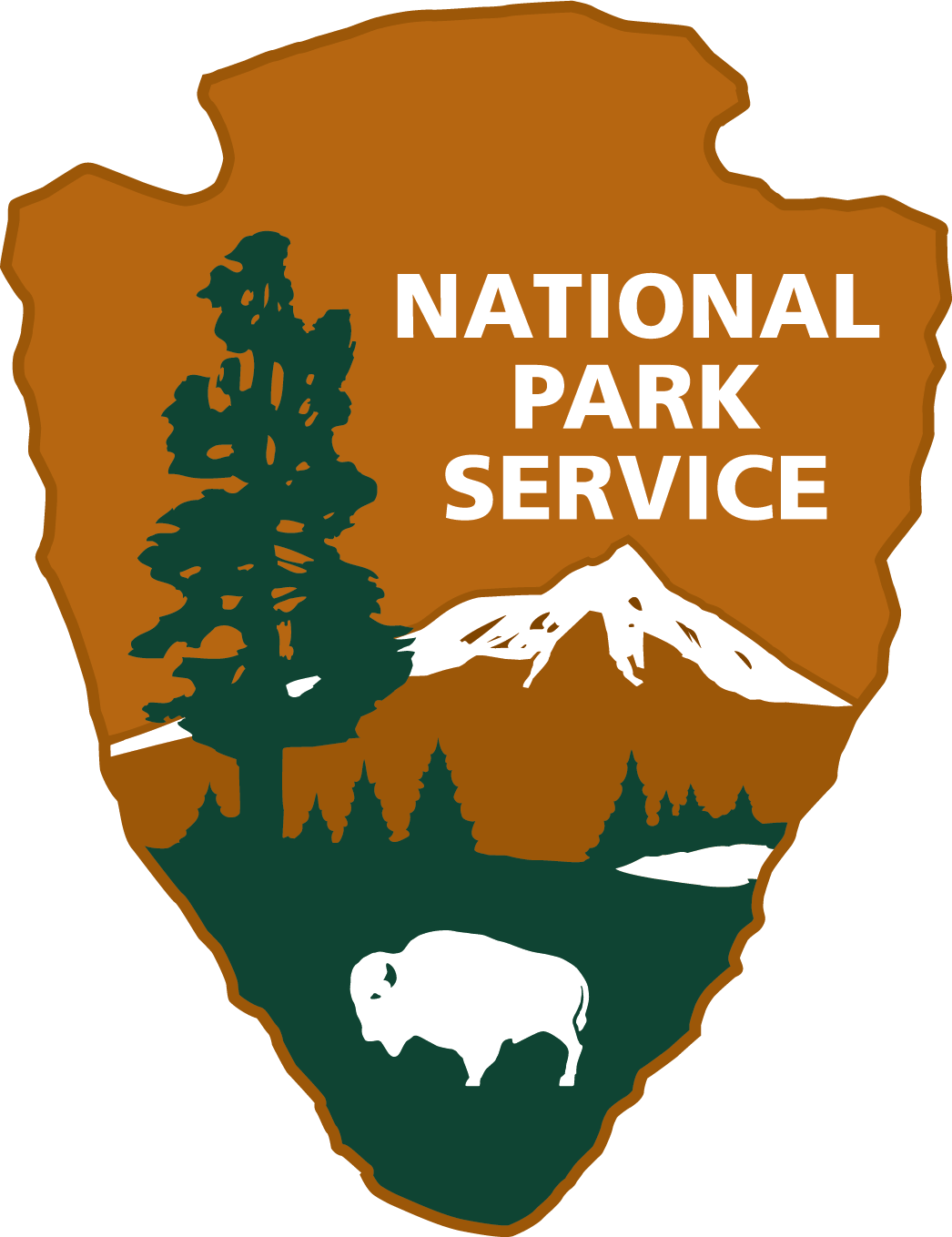Use this page to view archived advisories. The table below shows the overall danger rating and the bottom line for the 20 most recent advisories. Click on the time and date link above each danger rating icon to view the full advisory for that day. Use the date chooser or the pager at the bottom to scroll through the older advisories.
|
Date the advisory was published: |
Forecast Region | |
|---|---|---|
|
Click here to see the full advisory for 2021-01-08 |
January 8, 2021 at 9:24 Triggering recently-formed slabs of drifted snow remains possible on steep, upper-elevation slopes. These can break 1 to 3 feet deep. Sticking to slopes sheltered from southwesterly winds goes a long way towards avoiding this hazard, and towards finding the best riding conditions. Reduce your exposure to the lingering hazard of avalanches that break on buried weak layers by riding slopes less than about 35 degrees. |
Flathead Range and Glacier National Park |
|
Click here to see the full advisory for 2021-01-08 |
January 8, 2021 at 5:34 Triggering recently-formed slabs of drifted snow remains possible on steep, upper-elevation slopes. These can break 1 to 3 feet deep. Sticking to slopes sheltered from southwesterly winds goes a long way towards avoiding this hazard, and towards finding the best riding conditions. Reduce your exposure to the lingering hazard of avalanches that break on buried weak layers by riding slopes less than about 35 degrees. |
Whitefish Range |
|
Click here to see the full advisory for 2021-01-08 |
January 8, 2021 at 5:34 Triggering recently-formed slabs of drifted snow remains possible on steep, upper-elevation slopes. These can break 1 to 3 feet deep. Sticking to slopes sheltered from southwesterly winds goes a long way towards avoiding this hazard, and towards finding the best riding conditions. Reduce your exposure to the lingering hazard of avalanches that break on buried weak layers by riding slopes less than about 35 degrees. |
Swan Range |
|
Click here to see the full advisory for 2021-01-07 |
January 7, 2021 at 5:36 Look for terrain sheltered from southwesterly winds. Riding conditions will be better and you're less likely to trigger recently-formed slabs of drifted snow. The past month's snowfall has buried several weak layers with slabs 1 to 4 feet thick. A sure-fire way to reduce your exposure to this lingering hazard is to stick to slopes less than about 35 degrees. Riding one at a time while keeping a close eye on each other can minimize the consequences of triggering slabs. |
Flathead Range and Glacier National Park |
|
Click here to see the full advisory for 2021-01-07 |
January 7, 2021 at 5:36 Look for terrain sheltered from southwesterly winds. Riding conditions will be better and you're less likely to trigger recently-formed slabs of drifted snow. The past month's snowfall has buried several weak layers with slabs 1 to 4 feet thick. A sure-fire way to reduce your exposure to this lingering hazard is to stick to slopes less than about 35 degrees. Riding one at a time while keeping a close eye on each other can minimize the consequences of triggering slabs. |
Whitefish Range |
|
Click here to see the full advisory for 2021-01-07 |
January 7, 2021 at 5:36 Look for terrain sheltered from southwesterly winds. Riding conditions will be better and you're less likely to trigger recently-formed slabs of drifted snow. The past month's snowfall has buried several weak layers with slabs 1 to 4 feet thick. A sure-fire way to reduce your exposure to this lingering hazard is to stick to slopes less than about 35 degrees. Riding one at a time while keeping a close eye on each other can minimize the consequences of triggering slabs. |
Swan Range |
|
Click here to see the full advisory for 2021-01-06 |
January 6, 2021 at 6:06 Several models of wind slab are on offer today. All can be dangerous. Thin, fresh deposits may cover older, stubborn drifts below. The first may be more manageable. The latter can be harder, larger, and break in unexpected ways. Sheltered slopes where the snow is soft are a safer bet. You can manage uncertainty about the distribution of buried weak layers by choosing low-angled, planar slopes without terrain traps below. |
Flathead Range and Glacier National Park |
|
Click here to see the full advisory for 2021-01-06 |
January 6, 2021 at 6:06 Several models of wind slab are on offer today. All can be dangerous. Thin, fresh deposits may cover older, stubborn drifts below. The first may be more manageable. The latter can be harder, larger, and break in unexpected ways. Sheltered slopes where the snow is soft are a safer bet. You can manage uncertainty about the distribution of buried weak layers by choosing low-angled, planar slopes without terrain traps below. |
Whitefish Range |
|
Click here to see the full advisory for 2021-01-06 |
January 6, 2021 at 6:06 Several models of wind slab are on offer today. All can be dangerous. Thin, fresh deposits may cover older, stubborn drifts below. The first may be more manageable. The latter can be harder, larger, and break in unexpected ways. Sheltered slopes where the snow is soft are a safer bet. You can manage uncertainty about the distribution of buried weak layers by choosing low-angled, planar slopes without terrain traps below. |
Swan Range |
|
Click here to see the full advisory for 2021-01-05 |
January 5, 2021 at 6:47 Another round of new snow and wind has drifted slabs onto leeward terrain features. These reactive slabs will be covering more stubborn, but more dangerous hard slabs. While seeking wind-sheltered terrain, be cautious around steep rollovers and rocky start zones. This is where you are more likely to trigger a persistent slab avalanche that can be large enough to bury and injure you. Hedge your bets by riding one at a time and choosing terrain with clean runouts. |
Flathead Range and Glacier National Park |
|
Click here to see the full advisory for 2021-01-05 |
January 5, 2021 at 6:47 Another round of new snow and wind has drifted slabs onto leeward terrain features. These reactive slabs will be covering more stubborn, but more dangerous hard slabs. While seeking wind-sheltered terrain, be cautious around steep rollovers and rocky start zones. This is where you are more likely to trigger a persistent slab avalanche that can be large enough to bury and injure you. Hedge your bets by riding one at a time and choosing terrain with clean runouts. |
Whitefish Range |
|
Click here to see the full advisory for 2021-01-05 |
January 5, 2021 at 6:47 Another round of new snow and wind has drifted slabs onto leeward terrain features. These reactive slabs will be covering more stubborn, but more dangerous hard slabs. While seeking wind-sheltered terrain, be cautious around steep rollovers and rocky start zones. This is where you are more likely to trigger a persistent slab avalanche that can be large enough to bury and injure you. Hedge your bets by riding one at a time and choosing terrain with clean runouts. |
Swan Range |
|
Click here to see the full advisory for 2021-01-04 |
January 4, 2021 at 6:43 Winds continue to drift snow into firm slabs that can be large enough to bury and injure you. Seek out safer and better riding conditions in sheltered terrain. Bear in mind that weak layers buried 1 to 4 feet deep in the snowpack remain a concern. Hedge your bets by selecting terrain that is planar or concave, and is free of terrain traps. |
Flathead Range and Glacier National Park |
|
Click here to see the full advisory for 2021-01-04 |
January 4, 2021 at 6:43 Winds continue to drift snow into firm slabs that can be large enough to bury and injure you. Seek out safer and better riding conditions in sheltered terrain. Bear in mind that weak layers buried 1 to 4 feet deep in the snowpack remain a concern. Hedge your bets by selecting terrain that is planar or concave, and is free of terrain traps. |
Whitefish Range |
|
Click here to see the full advisory for 2021-01-04 |
January 4, 2021 at 6:43 Winds continue to drift snow into firm slabs that can be large enough to bury and injure you. Seek out safer and better riding conditions in sheltered terrain. Bear in mind that weak layers buried 1 to 4 feet deep in the snowpack remain a concern. Hedge your bets by selecting terrain that is planar or concave, and is free of terrain traps. |
Swan Range |
|
Click here to see the full advisory for 2021-01-03 |
January 3, 2021 at 6:56 A powerful storm arrived overnight with increasing avalanche danger. New snow and wind are forming slabs 1-2’ thick at and above the treeline. Be alert for changing conditions as you gain elevation. Selecting wind-sheltered terrain away from areas harboring drifts of stiff, dense snow is today’s go-to. The chance of natural and triggered slides on buried weak layers increases during storms. Default to planar lower-angled slopes to successfully deal with this difficult problem.
|
Flathead Range and Glacier National Park |
|
Click here to see the full advisory for 2021-01-03 |
January 3, 2021 at 6:56 A powerful storm arrived overnight with increasing avalanche danger. New snow and wind are forming slabs 1-2’ thick at and above the treeline. Be alert for changing conditions as you gain elevation. Selecting wind-sheltered terrain away from areas harboring drifts of stiff, dense snow is today’s go-to. The chance of natural and triggered slides on buried weak layers increases during storms. Default to planar lower-angled slopes to successfully deal with this difficult problem.
|
Whitefish Range |
|
Click here to see the full advisory for 2021-01-03 |
January 3, 2021 at 6:56 A powerful storm arrived overnight with increasing avalanche danger. New snow and wind are forming slabs 1-2’ thick at and above the treeline. Be alert for changing conditions as you gain elevation. Selecting wind-sheltered terrain away from areas harboring drifts of stiff, dense snow is today’s go-to. The chance of natural and triggered slides on buried weak layers increases during storms. Default to planar lower-angled slopes to successfully deal with this difficult problem.
|
Swan Range |
|
Click here to see the full advisory for 2021-01-02 |
January 2, 2021 at 7:14 Avoid freshly-formed slabs of drifted snow which can break 6 to 18 inches deep. You might stumble into these on usually sheltered slopes while seeking relief from powerful winds. Two parties triggered slides that broke on old snow Friday, highlighting a lingering hazard posed by weak snow buried near crusts. With warm temperatures, steep, low elevation slopes may be booby traps for sluffs of wet snow. The avalanche danger will rise as an approaching storm delivers more snow and wind. |
Flathead Range and Glacier National Park |
|
Click here to see the full advisory for 2021-01-02 |
January 2, 2021 at 7:14 Avoid freshly-formed slabs of drifted snow which can break 6 to 18 inches deep. You might stumble into these on usually sheltered slopes while seeking relief from powerful winds. Two parties triggered slides that broke on old snow Friday, highlighting a lingering hazard posed by weak snow buried near crusts. With warm temperatures, steep, low elevation slopes may be booby traps for sluffs of wet snow. The avalanche danger will rise as an approaching storm delivers more snow and wind. |
Whitefish Range |
|
Click here to see the full advisory for 2021-01-02 |
January 2, 2021 at 7:14 Avoid freshly-formed slabs of drifted snow which can break 6 to 18 inches deep. You might stumble into these on usually sheltered slopes while seeking relief from powerful winds. Two parties triggered slides that broke on old snow Friday, highlighting a lingering hazard posed by weak snow buried near crusts. With warm temperatures, steep, low elevation slopes may be booby traps for sluffs of wet snow. The avalanche danger will rise as an approaching storm delivers more snow and wind. |
Swan Range |
|
Click here to see the full advisory for 2021-01-01 |
January 1, 2021 at 6:54 The avalanche danger remains elevated in the Swan Range, where the snowpack adjusts to the recent heavy snowfall event. Increasing wind speeds will thicken slabs up to 2' thick below ridgelines and cross-loaded features such as gullies. Look for blowing snow as you gain elevation. Triggering an avalanche on a deeper buried weak layer remains a concern. Choosing simple terrain less than 35 degrees in steepness is a great way to start your New Year off on the right foot.
|
Swan Range |
|
Click here to see the full advisory for 2021-01-01 |
January 1, 2021 at 6:30 Fresh thin slabs will continue to form with today's wind, especially downwind of terrain features. Monitor snow depths and blowing snow as you gain elevation. Feel for stiffer snow and look for cracking at the surface, which is telltale signs of a slab. Triggering an avalanche on a deeper buried weak layer remains a concern. Choosing simple terrain less than 35 degrees in steepness is a great way to start your New Year off on the right foot.
|
Whitefish Range |
|
Click here to see the full advisory for 2021-01-01 |
January 1, 2021 at 6:30 Fresh thin slabs will continue to form with today's wind, especially downwind of terrain features. Monitor snow depths and blowing snow as you gain elevation. Feel for stiffer snow and look for cracking at the surface, which is telltale signs of a slab. Triggering an avalanche on a deeper buried weak layer remains a concern. Choosing simple terrain less than 35 degrees in steepness is a great way to start your New Year off on the right foot.
|
Flathead Range and Glacier National Park |
|
Click here to see the full advisory for 2020-12-31 |
December 31, 2020 at 5:50 You can trigger slabs of new and drifted snow on steep terrain features. Use small test slopes to track how well new snowfall and wind drifts have bonded to the old surface. Cracking in thick, drifted snow means that slabs are unstable. You’re most likely to get into trouble below corniced ridgelines, on the sidewalls of gullies, and near convexities where more than 6 inches of new snow has accumulated. Avoid slopes with terrain traps below. |
Whitefish Range |
|
Click here to see the full advisory for 2020-12-31 |
December 31, 2020 at 5:50 You can trigger slabs of new and drifted snow on steep terrain features. Use small test slopes to track how well new snowfall and wind drifts have bonded to the old surface. Cracking in thick, drifted snow means that slabs are unstable. You’re most likely to get into trouble below corniced ridgelines, on the sidewalls of gullies, and near convexities where more than 6 inches of new snow has accumulated. Avoid slopes with terrain traps below. |
Flathead Range and Glacier National Park |
|
Click here to see the full advisory for 2020-12-31 |
December 31, 2020 at 5:49 Rapid loading from new snow and wind has created very dangerous avalanche hazards that increase with elevation. Natural and human triggered avalanches will be more likely the higher you dare to go. Plan to limit yourself to slopes less than about 30 degrees as you gain elevation. Avoid being below slopes steeper than that, especially those near ridgelines where winds continue to load steep start zones. |
Swan Range |
|
Click here to see the full advisory for 2020-12-30 |
December 30, 2020 at 6:44 The chance of triggering small wind slabs on steep, leeward slopes will rise throughout the day. Watch for increasing snowfall and blowing snow as signs that drifts are getting denser and larger. Cracking in thick, drifted snow means that slabs are becoming unstable. You’re most likely to get into trouble below corniced ridgelines and on the sidewalls of gullies where more than 6 inches of new snow has drifted. |
Whitefish Range |
|
Click here to see the full advisory for 2020-12-30 |
December 30, 2020 at 6:44 The chance of triggering small wind slabs on steep, leeward slopes will rise throughout the day. Watch for increasing snowfall and blowing snow as signs that drifts are getting denser and larger. Cracking in thick, drifted snow means that slabs are becoming unstable. You’re most likely to get into trouble below corniced ridgelines and on the sidewalls of gullies where more than 6 inches of new snow has drifted. |
Flathead Range and Glacier National Park |
|
Click here to see the full advisory for 2020-12-30 |
December 30, 2020 at 6:30 The chance of triggering an avalanche up to a foot thick on steep slopes will rise throughout the day. Watch for increasing snowfall and blowing snow as signs that storm slabs are getting larger. Cracking in the new, denser snow means that slabs are becoming unstable. You’re most likely to get into trouble on steep, leeward slopes where more than 6 inches of new snow has accumulated. |
Swan Range |










